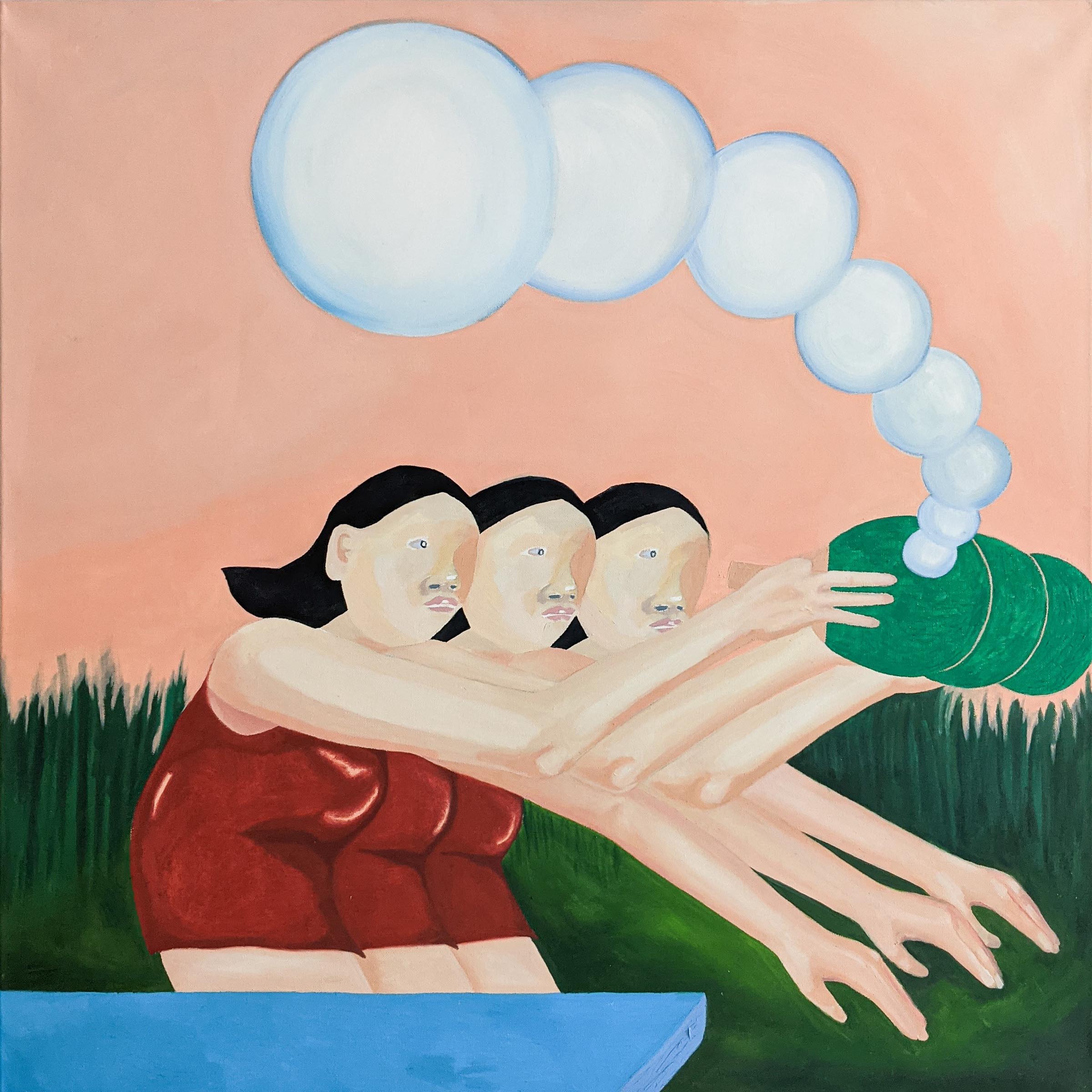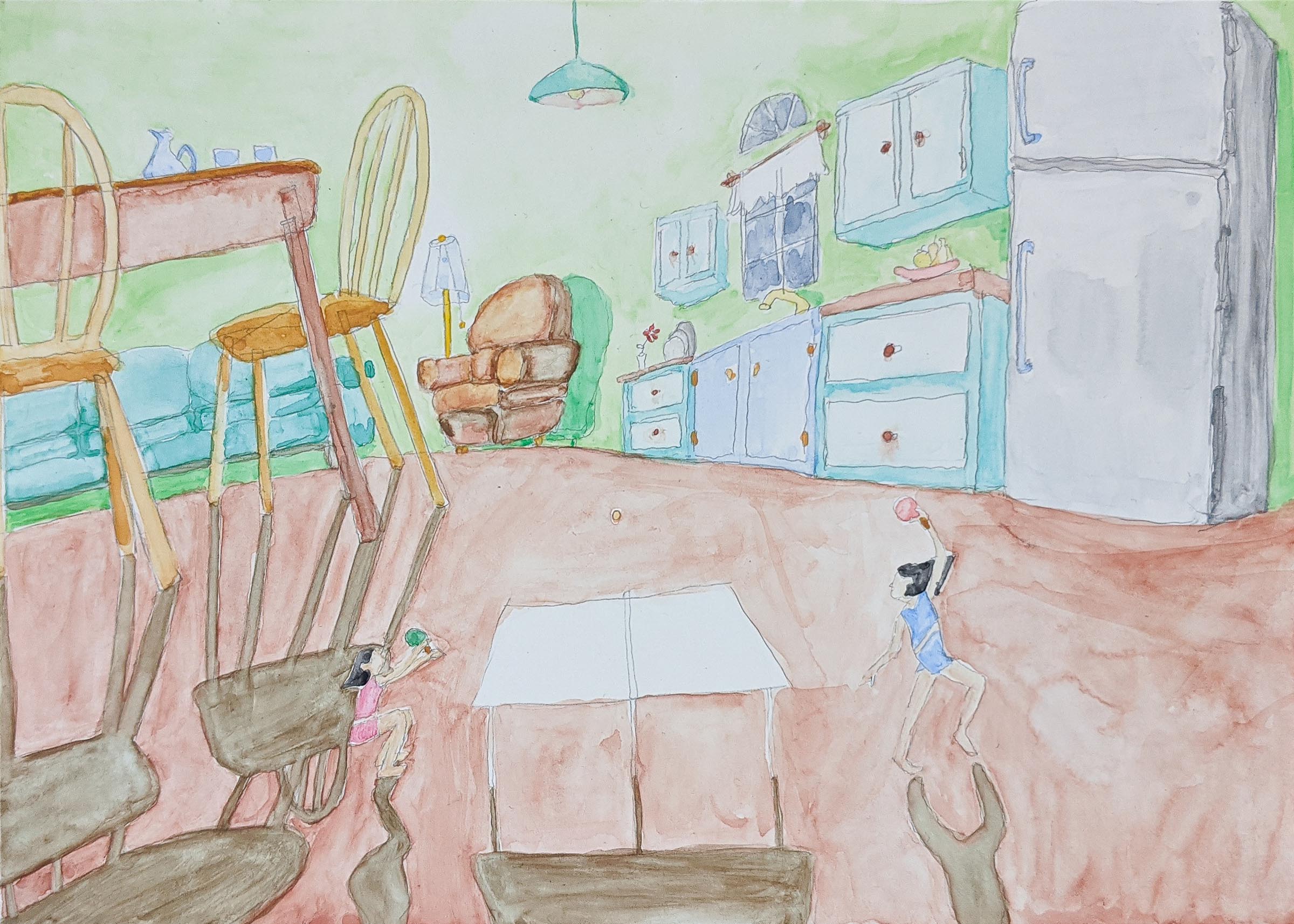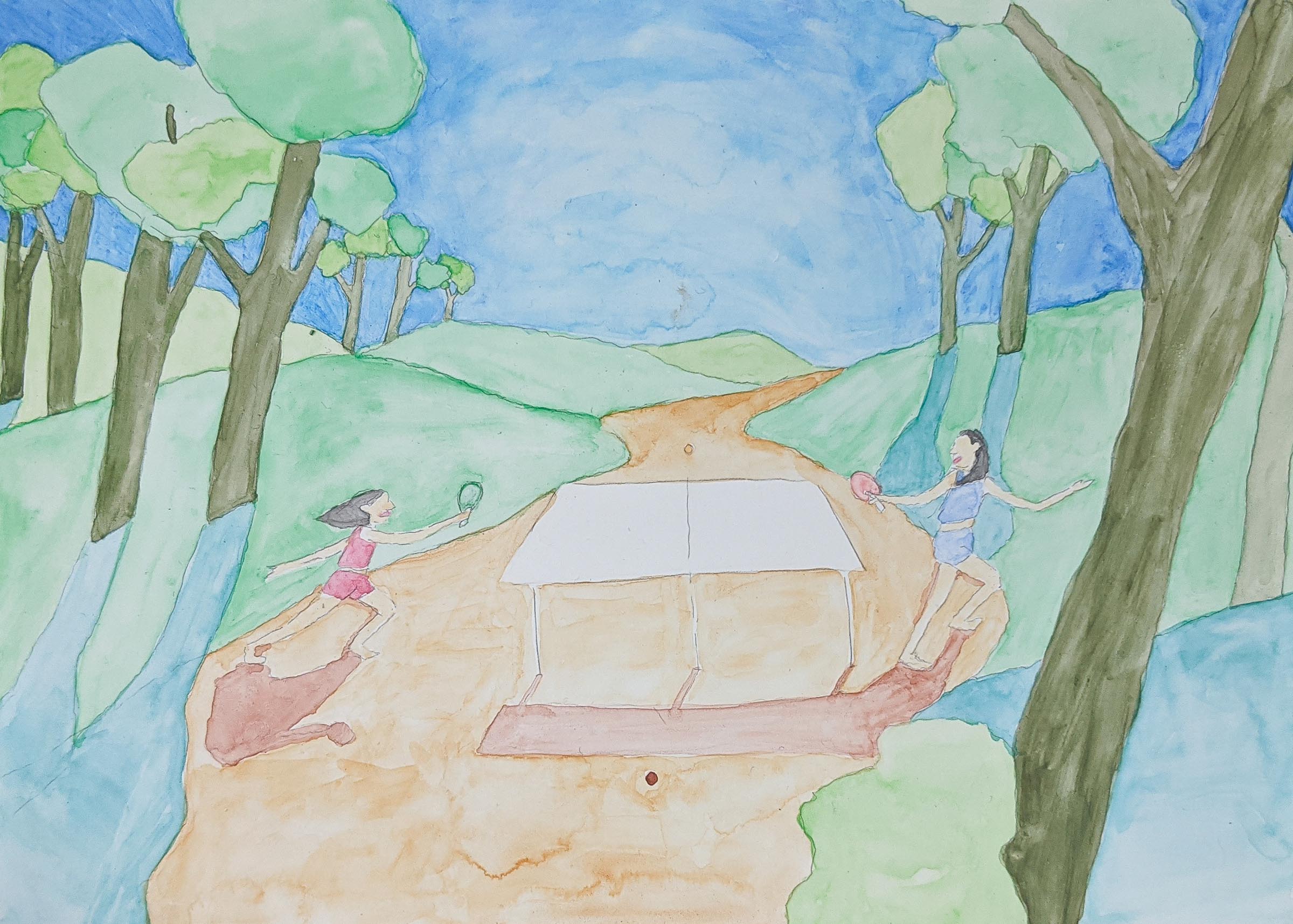How did you get into making art?
As a child, I would draw all over walls and furniture. This led my parents to put me in random afterschool and recreational drawing classes so that I could get all the energy out appropriately. A continued interest in films, tv shows, animation, and visual narratives in general has led me to pursue art in college, which then exposed me to more intentional ways of art making and world building. Now, I am continuously discovering the endless possibilities of expression, and also am repeatedly reminded that community and conversation is what sustains this perpetual momentum of creation.

What are you currently working on?
I am working with oil, gouache, watercolor, and hopefully sculpture soon, to illustrate ping pong. Ping pong has become my way to visually describe the experience of being Asian American. I compare the painted scenes of two players engaged in swift rally, with the ball ambiguously placed or sometimes unseen, to code-switching – the experience of moving between multiple languages, dialects, or vernaculars. Currently, I am working more intentionally with the context and settings surrounding the ping pong matches that I paint. This is to indicate displacement, by putting ping pong in places that ping pong is not expected to be, I hope to convey a sense of awkwardness and loneliness that comes with being in-between identities. But at the same time, within the same paintings, I hope to express a sense of triumph or joy that I also recognize in the Asian diaspora through the resilience and fortitude of immigrants.
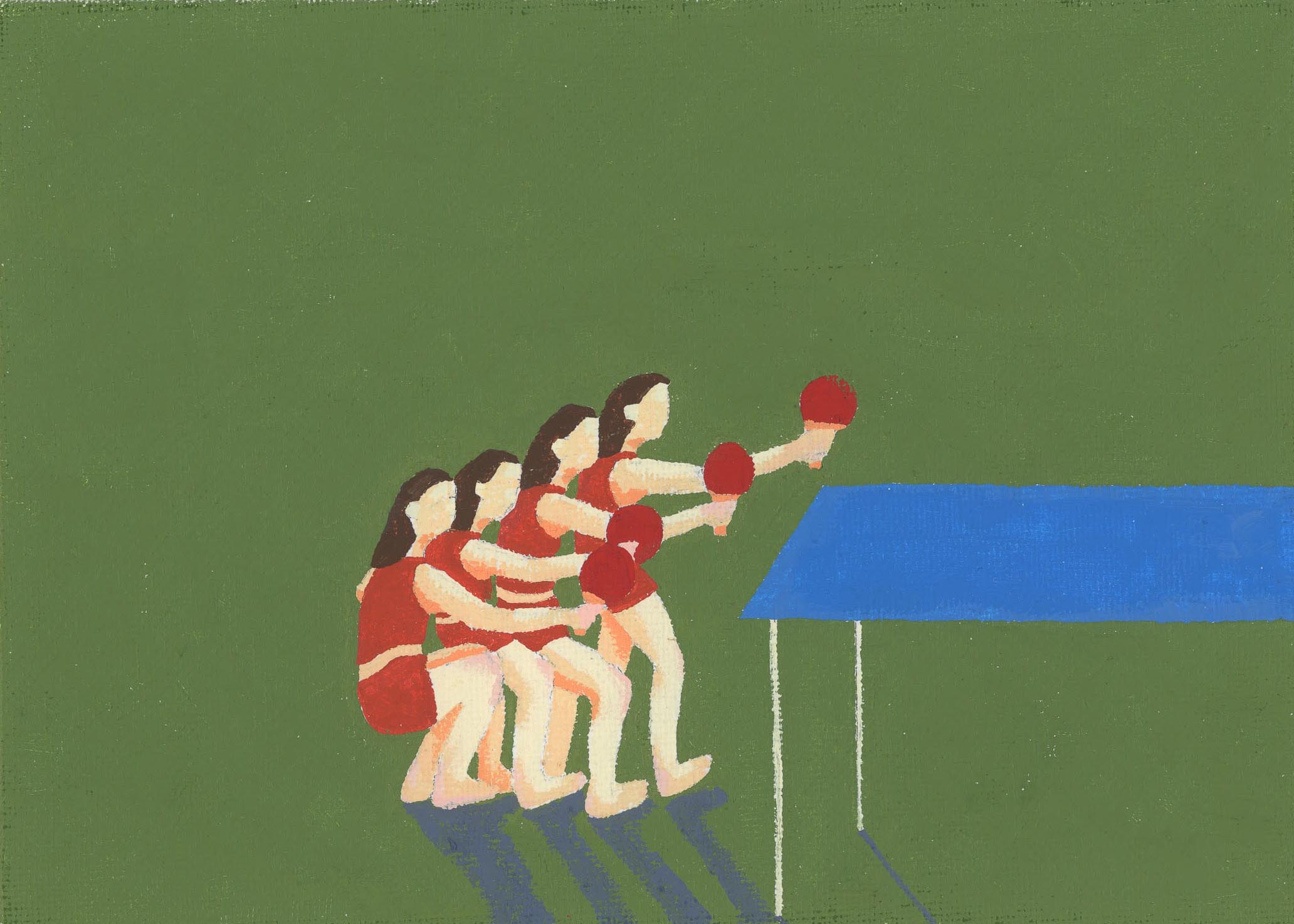
I am continuously discovering the endless possibilities of expression, and also am repeatedly reminded that community and conversation is what sustains this perpetual momentum of creation.
Yin Ming Wong
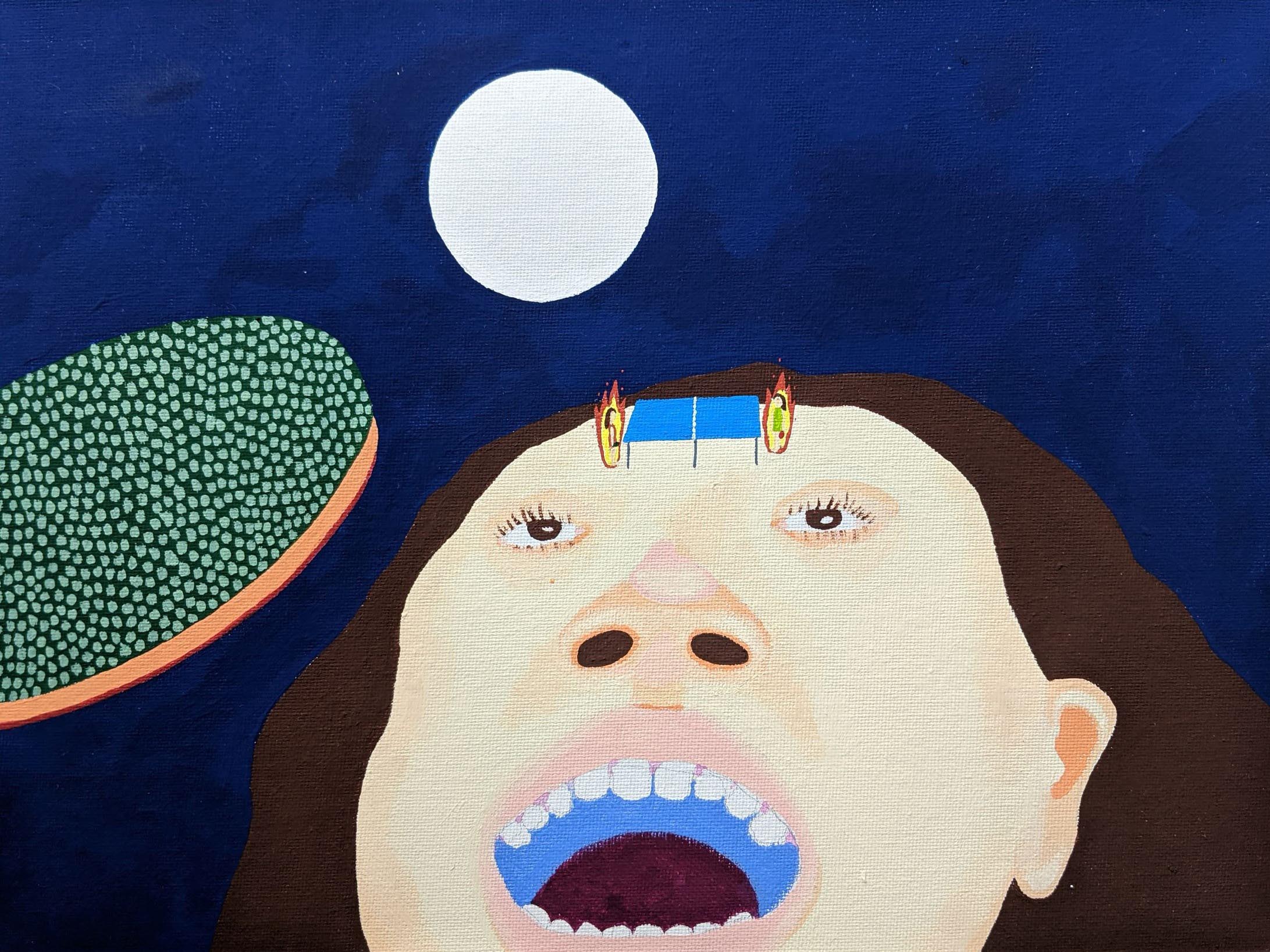
What inspired you to get started on this body of work?
I started painting ping pong at the start of 2020 when “ping-ponging” came up in a conversation with a friend as a way to describe code switching and bicultural identities. This dedicated making was further motivated by the socio-political climate in response to the murder of George Floyd and the racial discriminations and violence towards Asians that happened throughout the pandemic. I had many conversations with family and friends about the “perpetual foreigner” and “model minority” rhetoric that blankets over Asian Americans. However, due to my personality and interests, I am unable to address these feelings and ideas in a powerful or direct manner of making. Instead, I try to create scenes that can symbolically describe the feelings of displacement, uncertainty, and earnestness that myself and my family and other immigrant families experience, while still carrying a subtle edge of humor or quaintness, a slight relief.
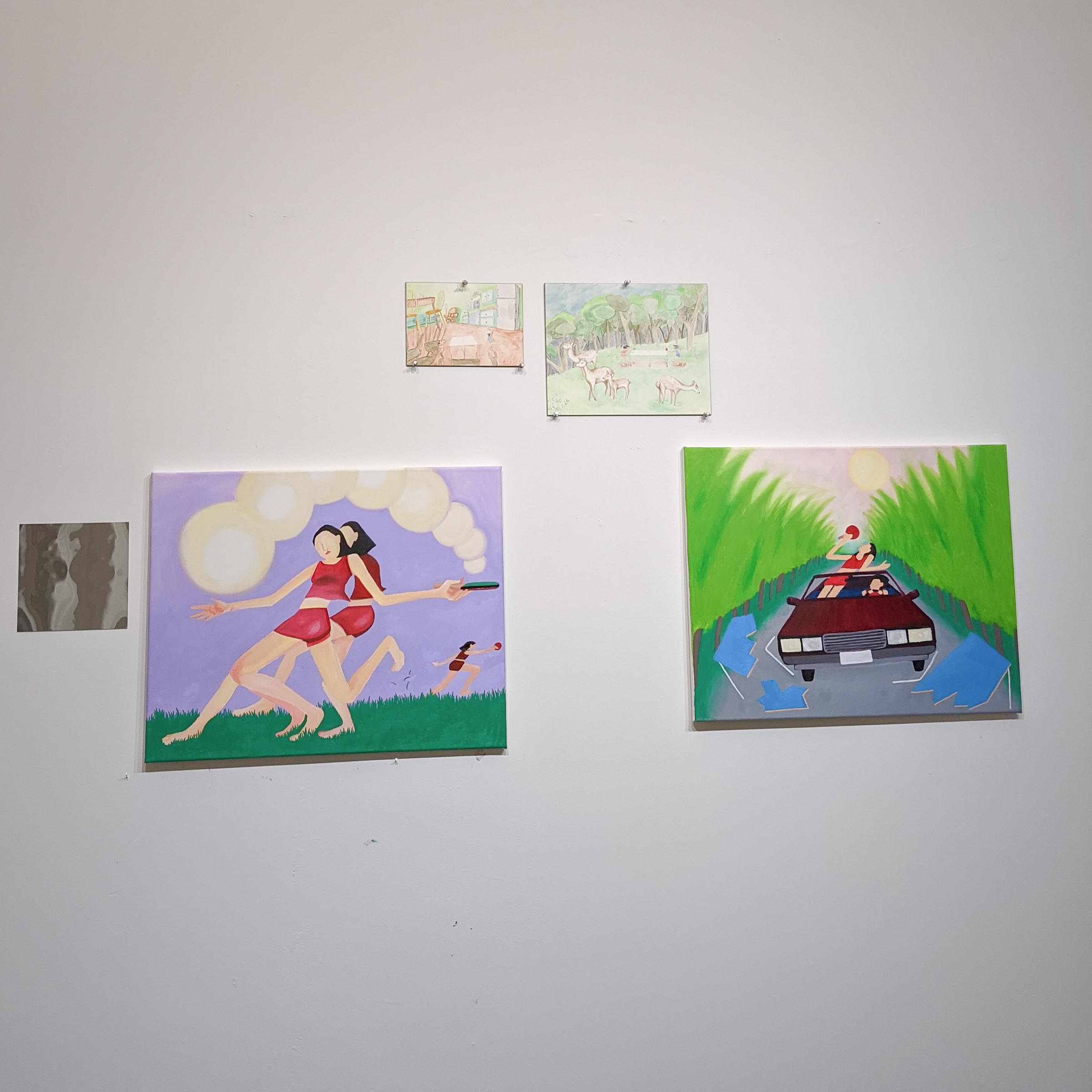
Do you work on distinct projects or do you take a broader approach to your practice?
I do seem to work with distinct motifs throughout my practice, but due to the interdisciplinary nature of my work, many of my projects inform the next. This doesn’t happen in a linear way though, and I weave in and out of ideas and visual similarities. I work from big ideas of nostalgia, displacement, competition, and find visual cues that work for me. In the past, from fish to summer camp, to ping pong and a squatting lady, I gravitated towards these symbols that have flexibility in terms of range of expression but can also be used to describe a narrative very accurately and specifically. At the same time, I don’t think I’ve moved on from any of them completely, as they still inform each of the new projects I begin and will always have a chance of reappearing in my work.
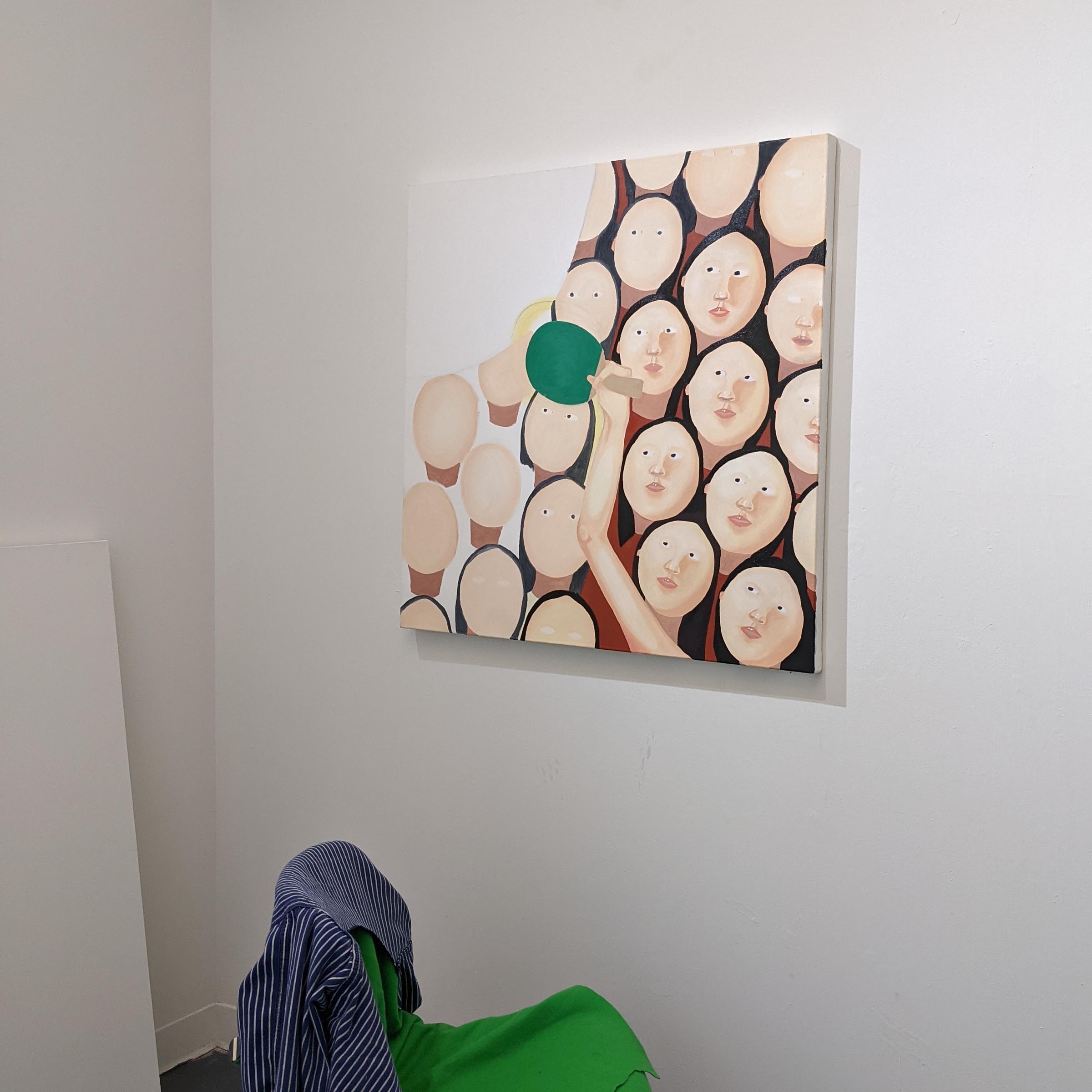
What’s a typical day like in your studio?
I think I honestly spend the first hour of any day at the studio looking for some type of media to play in the background while I work, whether it be a new album or a podcast, some queued YouTube videos or even a movie. While I do this, I am also setting up my workplace with brushes or pigments or cleaning up whatever snack I had just haphazardly consumed. Then, it’s a couple hours of focused pouting and working. Unless I have a class or meeting to attend, I usually know it’s time for me to go home when my back starts getting stiff. Days at the studio are also brightened by sudden studio visits and impromptu collaborations.
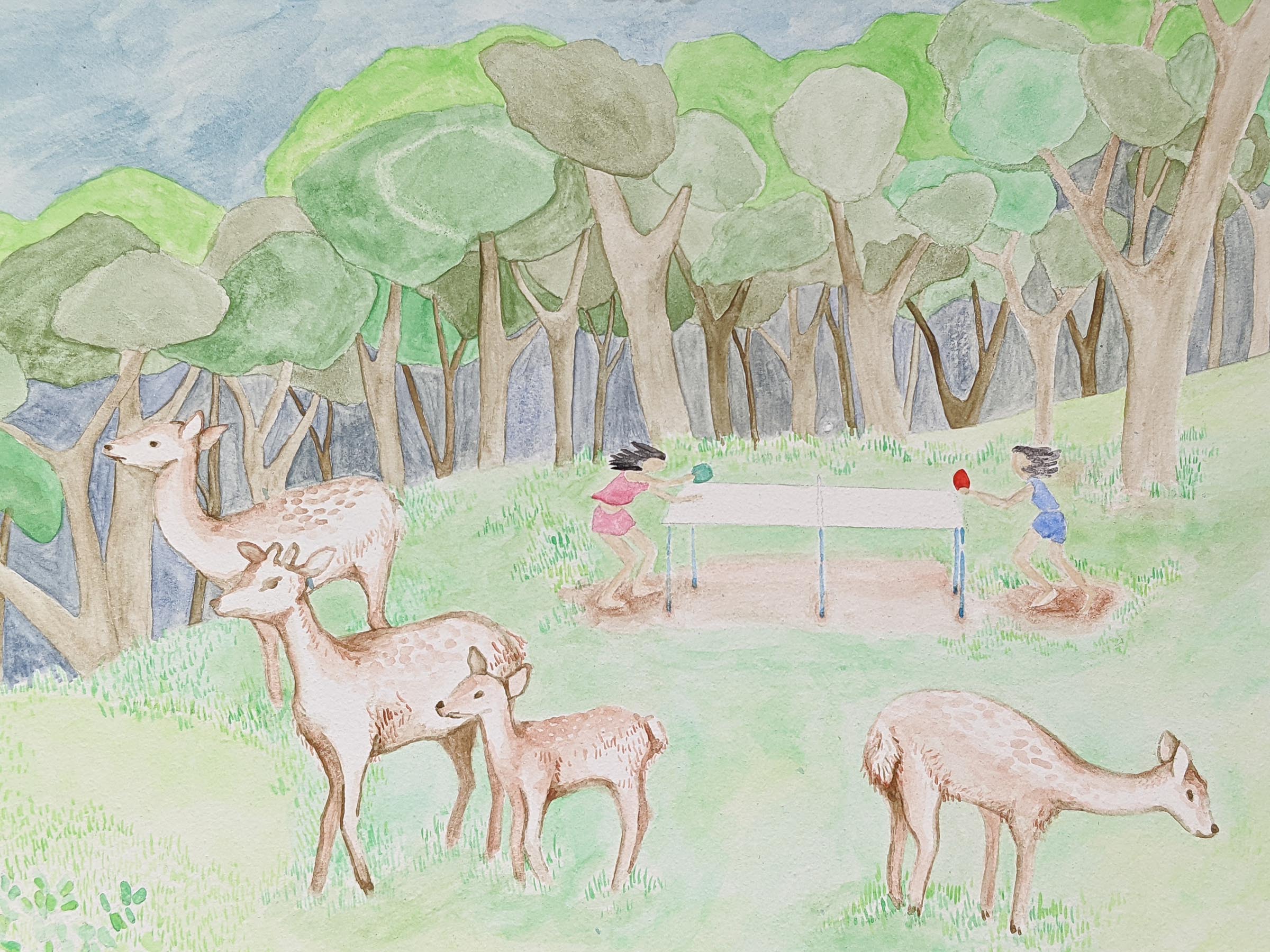
Who are your favorite artists?
I really enjoy the works of artist Cao Fei, painter Wei Dong, and animation director/artist Masaaki Yuasa. Maryam Hoseini, Cecilia Vinu, Shinro Ohtake, Hiro Kurata, Katherine Bradford, Anthony Cudahy, Dominique Fung, Susan M B Chen, and Koichi Sato are also some of the artists that I look to for inspiration and motivation. The list is ever-growing.
Where do you go to discover new artists?
Instagram is a huge resource, especially with the still gradually lifting restricted access to physical gallery and presentation spaces. My friend and fellow artist, Kyle Canyon, is the person that has always taken me to galleries and accompanies me to openings; this has expanded my small and stale database of artists considerably. We frequent galleries in the Lower East Side and Chinatown in Manhattan – some of my favorites being Shrine, Special Special, 1969 Gallery, and ATM Gallery – as well as spots speckled throughout Brooklyn/Queens/Bushwick.
Yin Ming Wong is an artist based in Brooklyn who was recently shortlisted for The Hopper Prize. To learn more about the artist:
